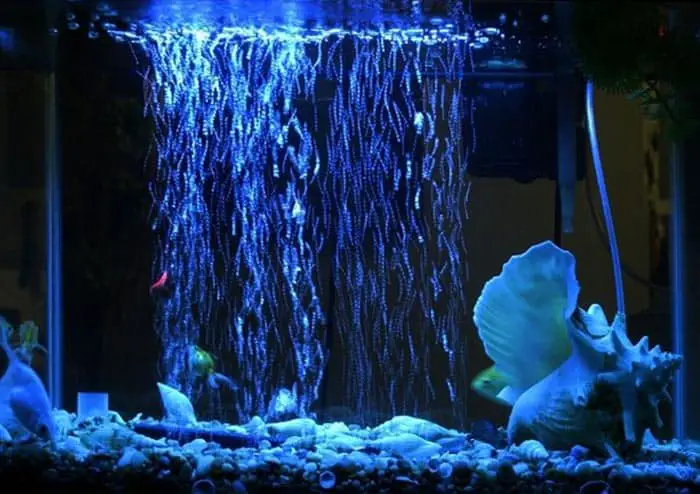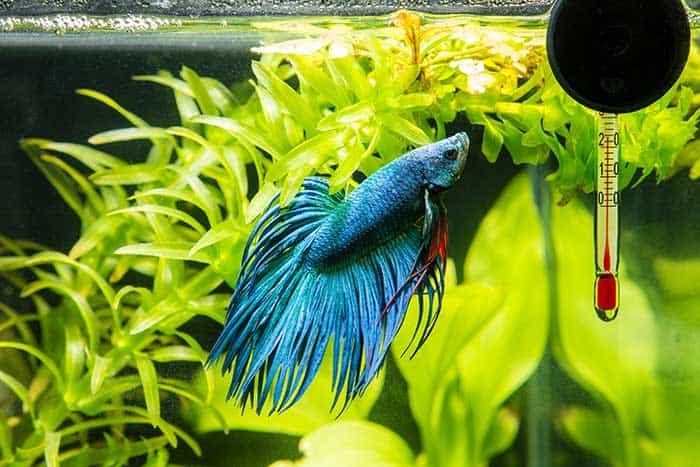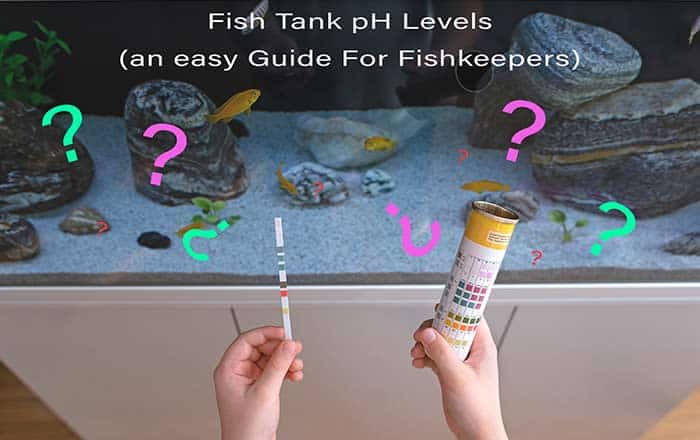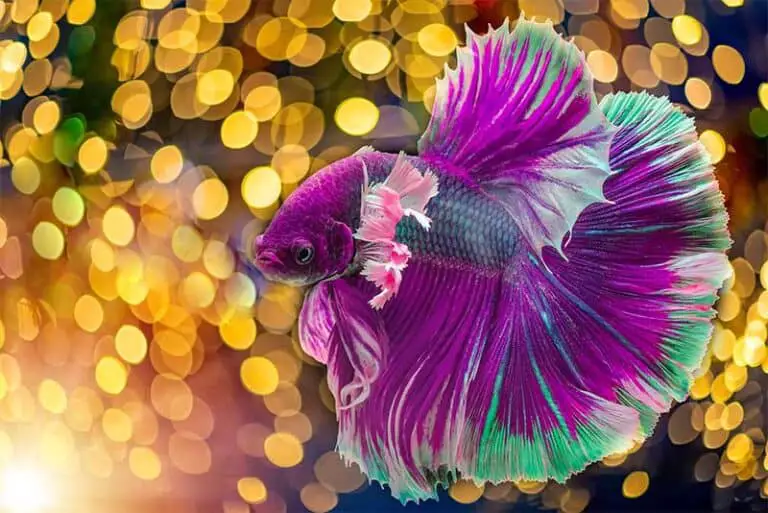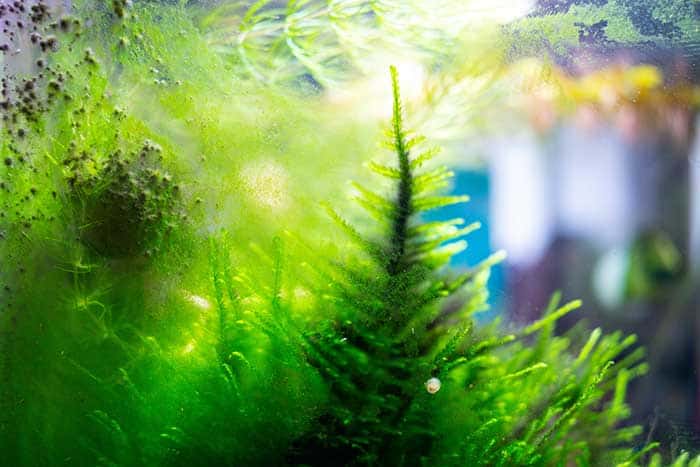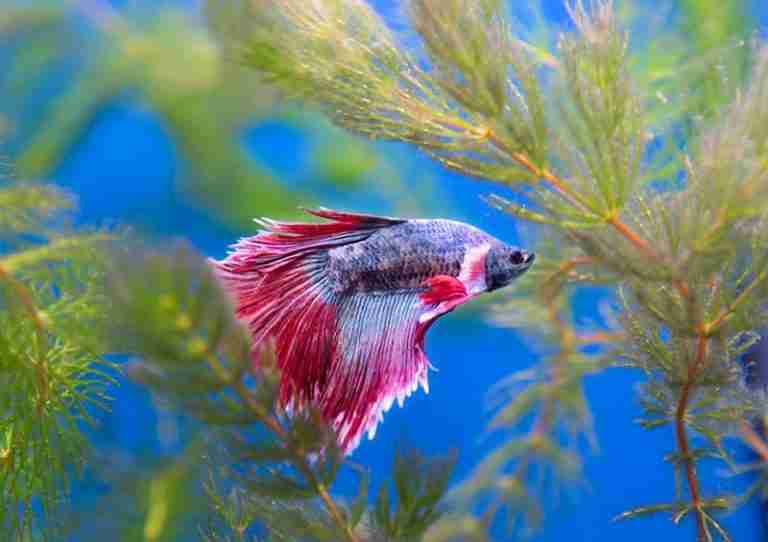Can You Over Filter A Fish Tank (What you need to know)
As a fishkeeping enthusiast, you probably know that fish tank filters are essential for keeping a clean and healthy tank. But, can you over filter a fish tank if the filter is too strong or you are using more than one?
Although under-filtration is far more common, over-filtration can be an easy mistake to make. The truth is that you can over-filter a fish tank which can be harmful to its inhabitants. Overfiltering your fish tank can cause several issues, such as a current that is too strong for fish, a reduction in biological filtration, a cloudy tank, and excess energy consumption.
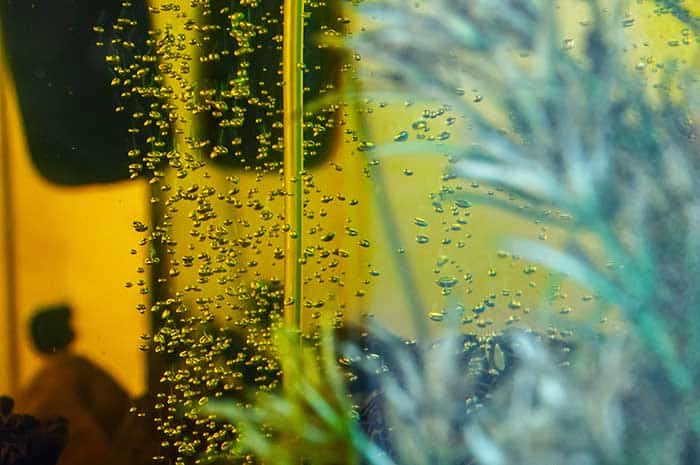
But how do you know when you’re over-filtering, and what can you do to fix it? This short article answers those questions and more! So please keep reading to learn everything you need to know about over-filtering and how to avoid it in your tank.
How Do Fish Tank Filters Work?
One of the critical components of a healthy fish tank is a filter. Filters come in many types: sponge filters, canister filters, under-gravel filters, internal filters, and external filters. So how do fish tank filters work?
At the most basic level, an aquarium filter works by drawing water into it through a pump, and as the water passes through, large dirt particles will become trapped inside the filter while the cleaner water is returned to the tank.
Mechanical aquarium filters are not the only way to keep your tank clean. There are more natural methods at work, so let’s take a look at what they are and delve a little deeper into how mechanical filtration systems work.
Biological VS Mechanical Filtration
When talking about fish tank filtration, there are two main ways filtration occurs, mechanical filtration and biological filtration, so let’s look at each.
Mechanical Filtration
Mechanical filtration is through the use of a physical filter that is powered by electricity. Fundamentally, mechanical fish tank filters work by circulating water through a series of chambers that remove toxins and debris. As water flows into the filter, it first passes through a coarse mechanical filter that removes large waste particles.
The water then flows into a chamber containing biological media, where beneficial bacteria break down ammonia and nitrites. Finally, the water flows through a fine chemical filter that removes any remaining impurities.
By circulating water through these different stages, fish tank filters provide a constantly clean and healthy water flow for your fish.
Mechanical filters are the most straightforward form of filtration to implement in an aquarium and help remove large particles of decaying food and fish waste and harmful chemicals in the water. Mechanical filters can also play an essential role in biological filtration, which I will discuss next.
Biological Filtration
Removing waste products from the water is essential because they will eventually convert to harmful chemicals such as ammonia and nitrites. Biological filtration is one of the crucial methods of removing these toxic chemicals.
Biological filtration uses beneficial bacteria to break down waste products in the water, making them harmless. Specific bacteria feed on the harmful ammonia and create a waste product of their own, toxic nitrites, which are then fed on by other beneficial bacteria, eventually converting into the least toxic chemical, nitrates.
Nitrates are also an excellent food for live plants to feed on. You can also remove nitrates through mechanical filtration and water changes. This cycle is called the nitrogen cycle, an essential part of any healthy aquarium. The nitrogen cycle will begin when correctly cycling a brand new aquarium. In some situations, levels of beneficial bacteria may decline, and you will need to carry out an emergency cycle.
Below is a video I found on Youtube which helps to explain the nitrogen lifecycle.
Biological filtration is an essential part of keeping a healthy fish tank, and it is something that all fishkeepers should be aware of. Beneficial bacteria are present throughout the fish tank and are also held in a mechanical filter. As water passes through the filter, the bacteria help to clean it.
Under-Gravel Filters are another option that relies heavily on biological filtration methods. The substrate at the bottom of the tank is rich in healthy bacteria, which will break down waste and other toxic chemicals. An under-gravel filter sits under the substrate, pulling debris down into it.
Do Fish Need A filter To Survive?
Water chemistry can be very delicate, and waste build-up can cause water chemistry to change rapidly, causing spikes in pH levels, changes to the water hardness, an increase in water alkalinity, and the production of toxic chemicals.
Fish do not need a filter to survive, especially if there is enough biological filtration. However, most fish do best with some kind of aquarium filtration.
A good canister filter or power filter will clean the water by trapping fish waste, uneaten food, and other debris. Dirty water can eventually cause several health problems for fish.
A good filter also removes toxins from the water, making it safer for fish to live. There are many different types of filters available, and the best one for your aquarium will depend on the size of the tank and the type of fish you have. As long as you choose a filter appropriate for your aquarium, your fish should be able to thrive.
Do I Need A Filter In A Planted Tank?
Planted tanks are becoming increasingly popular among fishkeepers and for a good reason. They offer a more natural environment for fish and can be quite beautiful to look at.
However, one question that often comes up is whether or not you need a filter in a planted tank. The answer depends on a few factors.
- What kind of plants are in the tank? Fast-growing plants like Java fern help keep the water clean by absorbing nutrients.
- What kind of fish are in the tank? Fish that produce a lot of waste, such as goldfish or cichlids, need a more powerful filtration system.
- How often do you perform water changes? Regular water changes are essential for a healthy planted tank, removing excess nitrates, so if you are doing water changes every week or two, you may not need a filter.
- Does your tank get enough oxygen? Every living thing consumes and excretes something. Plants consume nitrates and excrete oxygen which dissolves into the tank for your fish to breathe. Oxygen also enters the water at the surface by some form of surface agitation. A large tank may not get enough oxygen from plants, so a filter can help to cause the surface agitation required for oxygen to enter the water.
Overall, most fishkeepers find it beneficial to have some kind of aquarium filtration in a planted tank. Filters work well in conjunction with plants to help keep the water clean and healthy for your fish, and it is an excellent way to prevent excess algae growth.
You need to know how to clean aquarium plants by hand, as filters will not keep them clean by themselves.
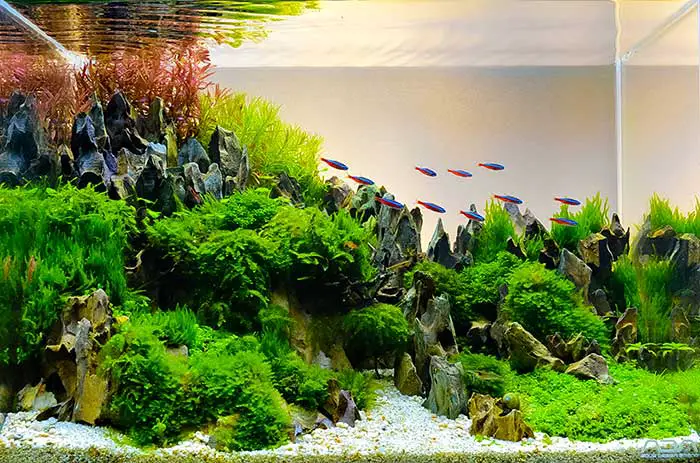
Can A Filter Be Too Big For A Fish Tank?
Most people believe that a filter must be sized according to the fish tank to work properly. However, this is not necessarily the case. While it is true that a filter needs to fit in the tank and be able to circulate all of the water in the tank, a large filter can be beneficial.
A larger filter will have more surface area for beneficial bacteria to grow inside, and it’s less likely to get clogged. As a result, a larger filter can provide better filtration than a smaller one. Of course, there are some trade-offs to consider.
A larger aquarium filter will cost more money and take up more space. However, if you have the budget and the room, a larger filter is an excellent option for your fish tank, and it helps you to get crystal clear fish tank water.
Can A Filter Be Too Powerful For A Fish Tank?
A filter can be too powerful for a fish tank as it can cause over-filtration and create a current that is too strong for the species of fish that you keep.
Many tropical fish species, such as betta fish and angelfish, are used to slow-moving bodies of water. If your filter flow rate is too powerful, it creates a strong, fast-flowing current which can stress your fish and cause them to hide in areas of the tank where the current is weaker.
Over-filtration is another problem that can occur from a filter that is too powerful, which I talk about in the next section.
How To Reduce Filter Current
There are several ways to reduce filter current if you find it too powerful for your fish tank, which I will detail below.
- Turn the filter flow rate down by hand – Many filters will have a flow control adjustment, so you can manually switch the flow rate up or down to suit your tank size.
- Point the filter flow nozzle against the glass – Filters work by sucking water in at one end (usually the bottom) and spitting out clean water at the top through a nozzle. If you point the nozzle against the tank glass, it diffuses the intensity of the flow and reduces water movement and turbulence.
- Raise the filter nozzle out of the water – Raising the filter nozzle out of the water still allows fresh water to enter the tank, but it reduces the current created. The higher you raise the nozzle, the further the water has to fall before it reaches the tank, which may create excess bubbles and surface disturbance. However, this is also an excellent way to increase oxygen levels in the tank water.
- Place plants or ornaments in front of the filter – Any object placed in front of the filter flow nozzle diffuses the current and redirects it evenly through the tank.
- Connect a spray bar – Spray bars spread out the water flow making it less concentrated in one spot and reducing the power of the water flow.
- Add a denser filter sponge or more filter media – Many filter sponges allow water to enter the filter very quickly, so using a thicker sponge or more filter media will reduce the amount of water entering the filter.
By using the methods above, you should be able to reduce the current strength and help reduce the stress that your fish are feeling.
What Is Over-Filtration?
Over-filtration is caused by a filter that is too strong for the size of the aquarium you own. Over-filtration has many symptoms, some more concerning than others. So let’s take a look at some of these symptoms.
- Cloudy fish tank water – A filter that is too strong causes so much water movement that it disturbs waste and sediment in the tank, causing it to become cloudy and difficult to see into.
- A breakdown in the formation of healthy bacteria – Beneficial bacteria not only lives in the filter it is also present throughout the tank, helping to reduce the build-up of waste within the substrate on helping to reduce algae build-up. Over-filtering causes a breakdown of the bacteria layering that is required.
- A current that is too strong – Over-filtering is caused by a filter that is too strong, creating too much current within the aquarium and causing delicate fish to struggle when swimming.
Over-filtering is not that common as it requires an extremely powerful filtration system. A filter so strong as to cause over-filtering would negatively affect your fish’s ability to move around the tank. You immediately want to reduce the filter flow using the methods I mentioned in the previous section.
What Size Filter For Fish Tank?
It’s essential to choose the right size filter for your fish tank to ensure a healthy environment for your fish. The size of the filter determines the flow rate and how much water it can filter. A simple sponge filter suits most tanks, whereas a canister filter is ideal for a larger tank.
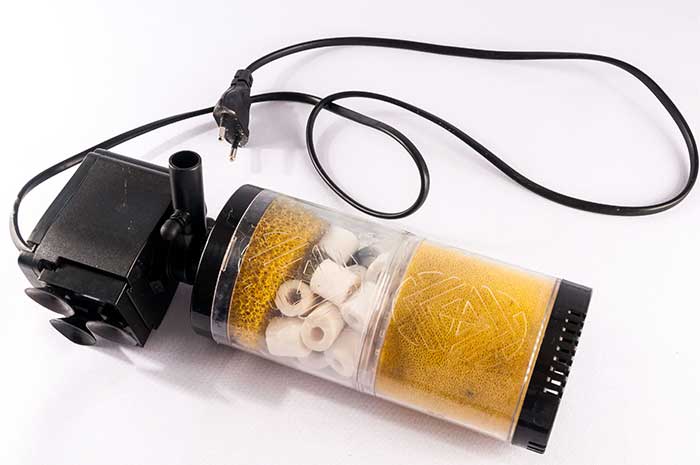
Most filter manufacturers recommend the tank size that a particular filter is suitable for, and some people decide on a suitable filter size based on the filter’s flow rate compared to the capacity of their tank.
Some of the most common rules that people follow are based on how much water volume a filter can turn over during a particular time frame.
Of course, there are other factors to consider when choosing a filter for your fish tank. The type of fish you have, the plants in your tank, and the amount of waste produced all play a role in determining the size and type of filter that you need.
Aquarium Filter Flow Rate Calculator
Some of the most common calculations that people follow when choosing a suitable filter are:
- A filter that can turn over the volume of water held in the tank at least once per hour. So a 50-gallon tank needs a filter with a flow rate of 50 gallons per hour.
- A filter that can turn over the volume of water held in the tank at least twice per hour. So a 50-gallon tank needs a filter with a flow rate of 100 gallons per hour.
- A filter that can turn over the volume of water held in the tank at least four times per hour. So a 50-gallon tank needs a filter with a flow rate of 200 gallons per hour.
I choose aquarium filters that complete a total water turnover twice per hour. This has always been fine for me, and I have never had any problems with over or under-filtration.
Can You Use 2 Filters In A Fish Tank?
There are several reasons you may want to use 2 filters in an aquarium, and this is perfectly fine to do. However, as with most things, there are benefits and drawbacks. For instance, multiple filters can allow for a gentler flow rate and enable you to cover a larger area more thoroughly. You need to avoid over-filtration.
If you have a big tank, a single filter may struggle to cover the whole tank without creating a current too strong for the fish. By using multiple filters which are smaller, you can place them at opposite ends of the tank and still achieve a good level of filtration without creating too much water movement for your fish.
When using more than one filter, ensure that you don’t end up with redundant aquarium filtration, which is where the filters are too powerful for the area they need to cover.
If you are using two filters, ensure that you are filtering evenly instead of over-filtering, as too much filtration impacts the natural biological filtering in the aquarium.
Using more than one filter can also create opposing currents which may bother your fish, and they may also generate more noise than when using one filter.
Does A Fish Tank Filter Always Need To Be On?
There are a few different factors to consider when determining whether or not to keep your fish tank filter on. The first is the type of fish you have. If you have fish that are particularly sensitive to water quality, it’s essential to keep the filter on to ensure they have a clean and safe environment.
Another factor to consider is the size of your tank. In general, the larger the tank, the more stable the water quality will be, and you may get away with turning the filter off for short periods. However, if you have a smaller tank, it’s best to err on the side of caution and keep the filter running.
Finally, you’ll also want to take into account your own lifestyle. If you’re gone for long periods during the day, it’s good to keep the filter running so that the tank doesn’t become too polluted. Alternatively, if you’re home all day, you may be able to get away with turning the filter off for a few hours at a time.
Wrap Up
Not only has this article answered the question, “Can you over filter a fish tank?” but I have also explained what filtration systems do and many of the problems you can run into when using a filter.
Over-filtering is not a common problem, certainly not as common as under-filtering, but it is a problem that can arise if you’re not careful. By following the advice in this article, you can help to ensure that your aquarium has the right level of filtration for your needs.


